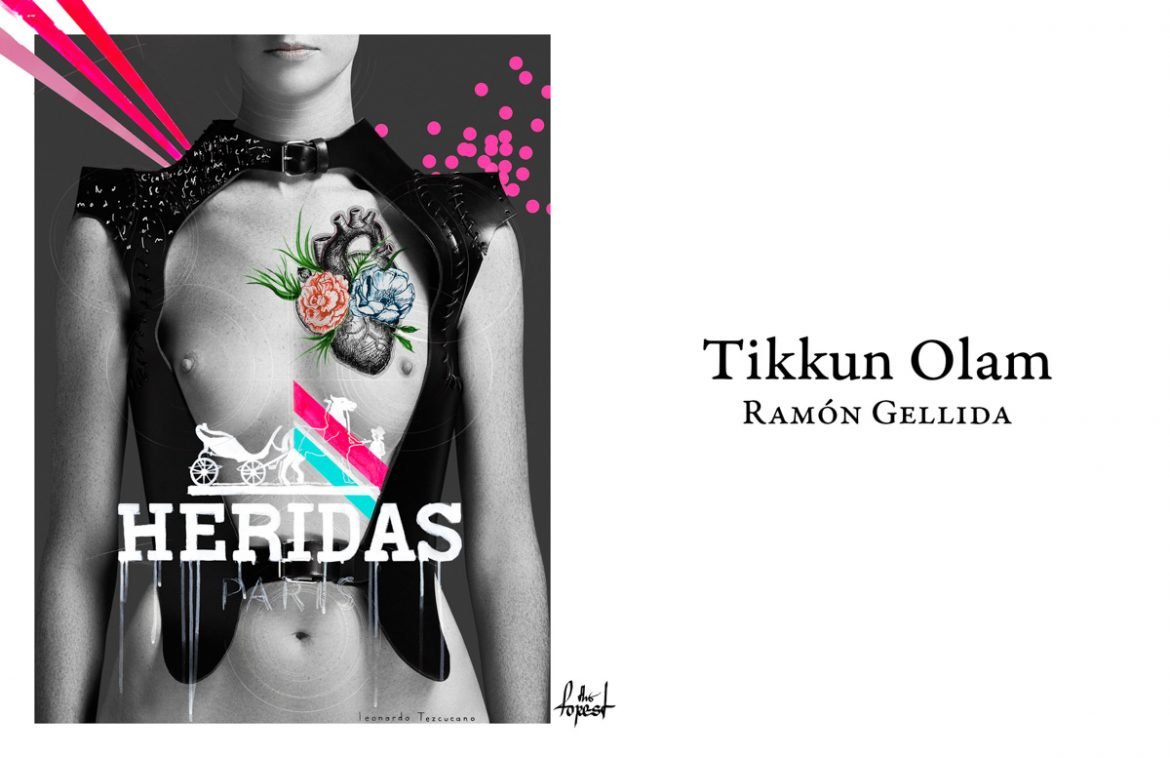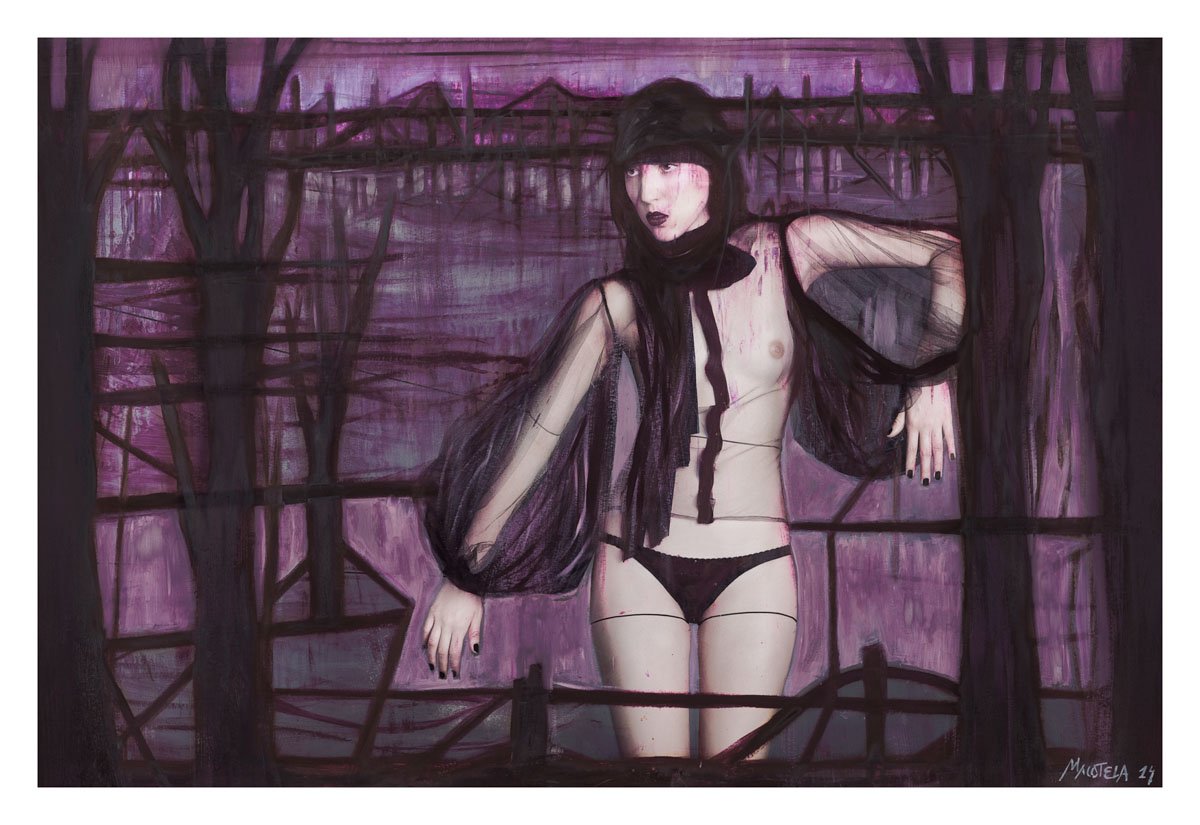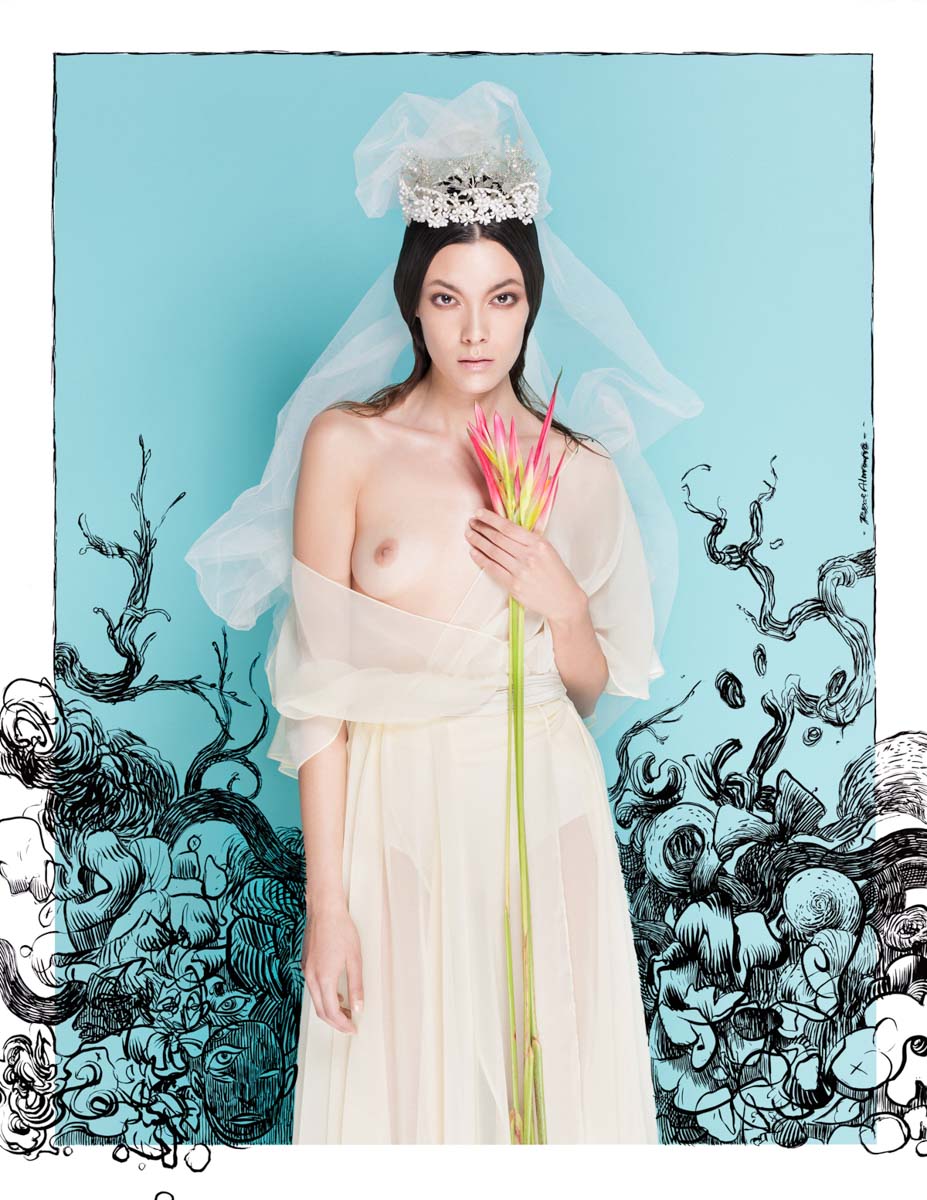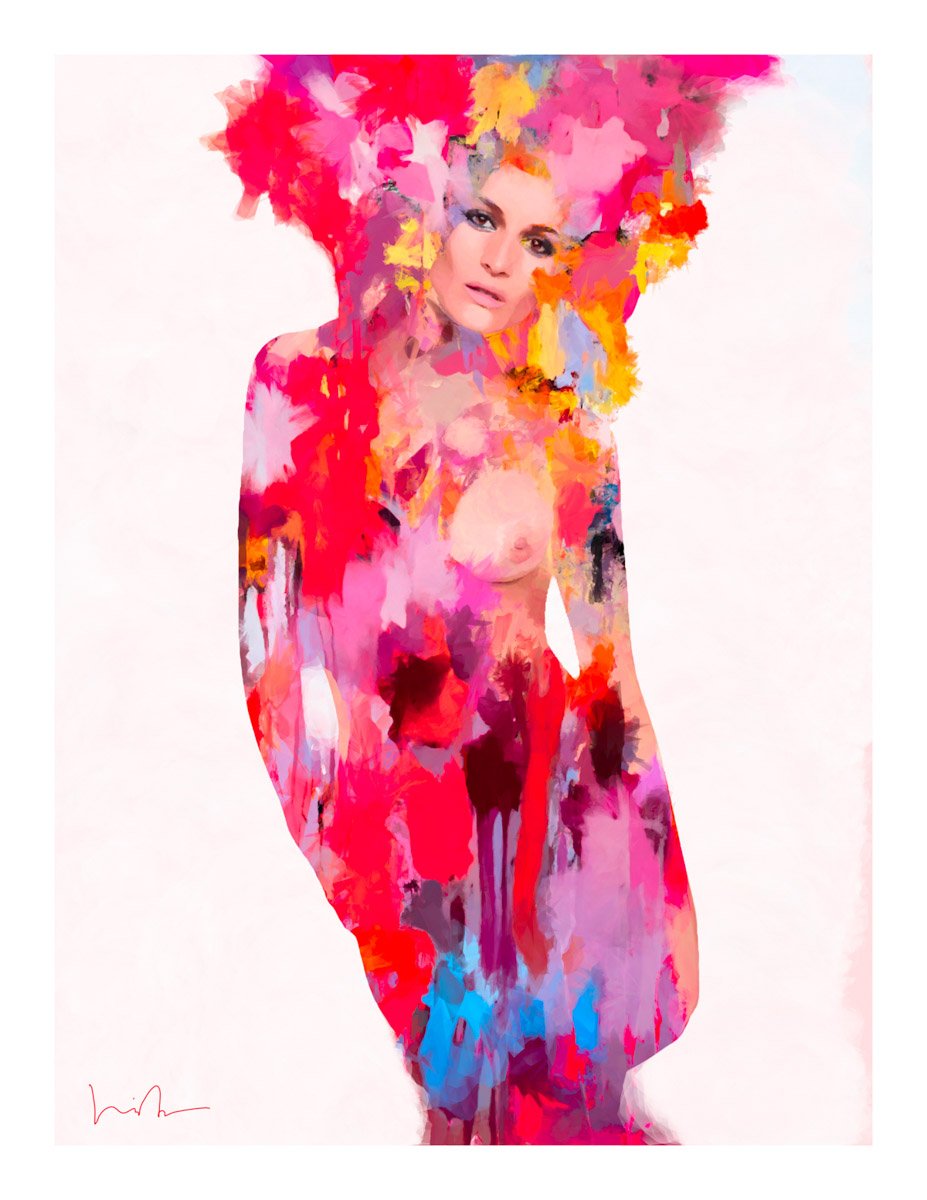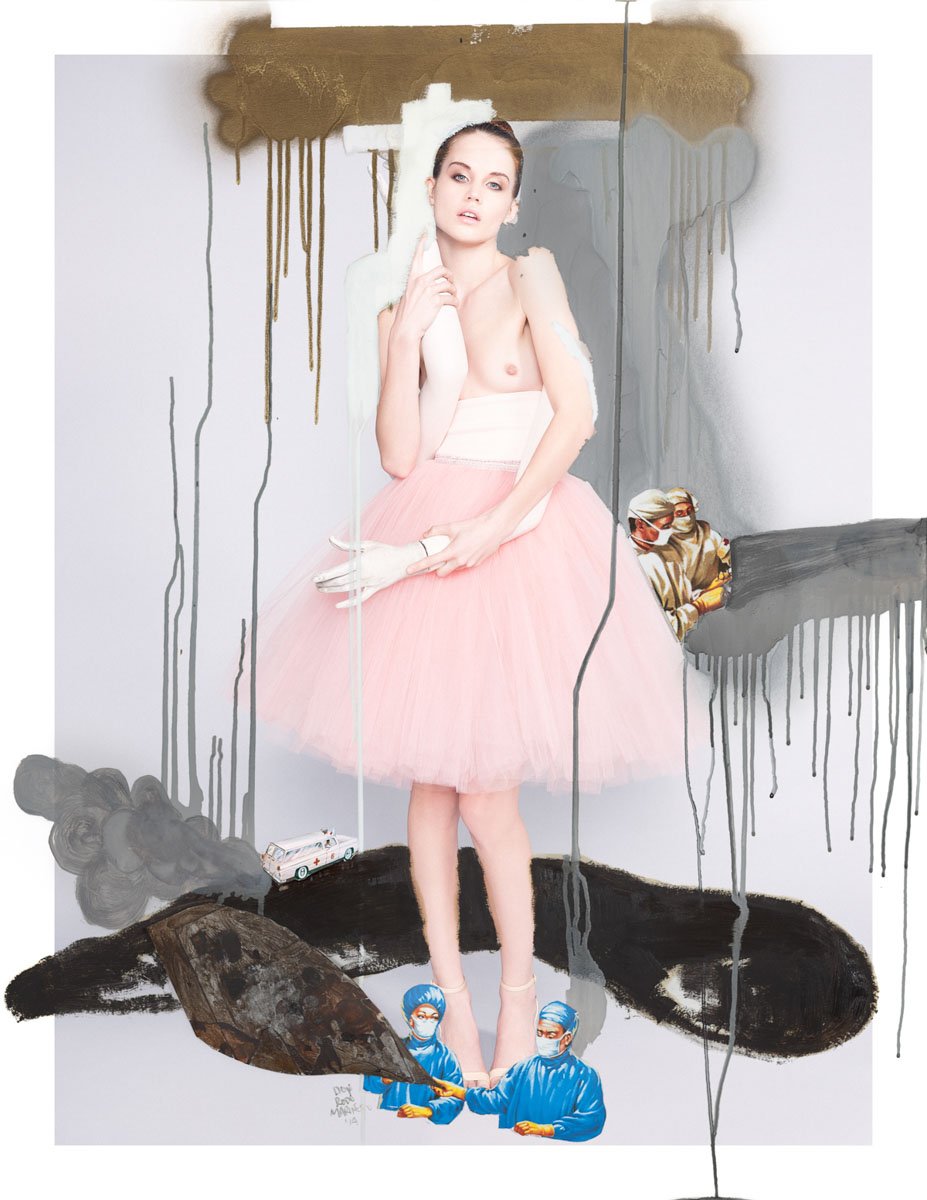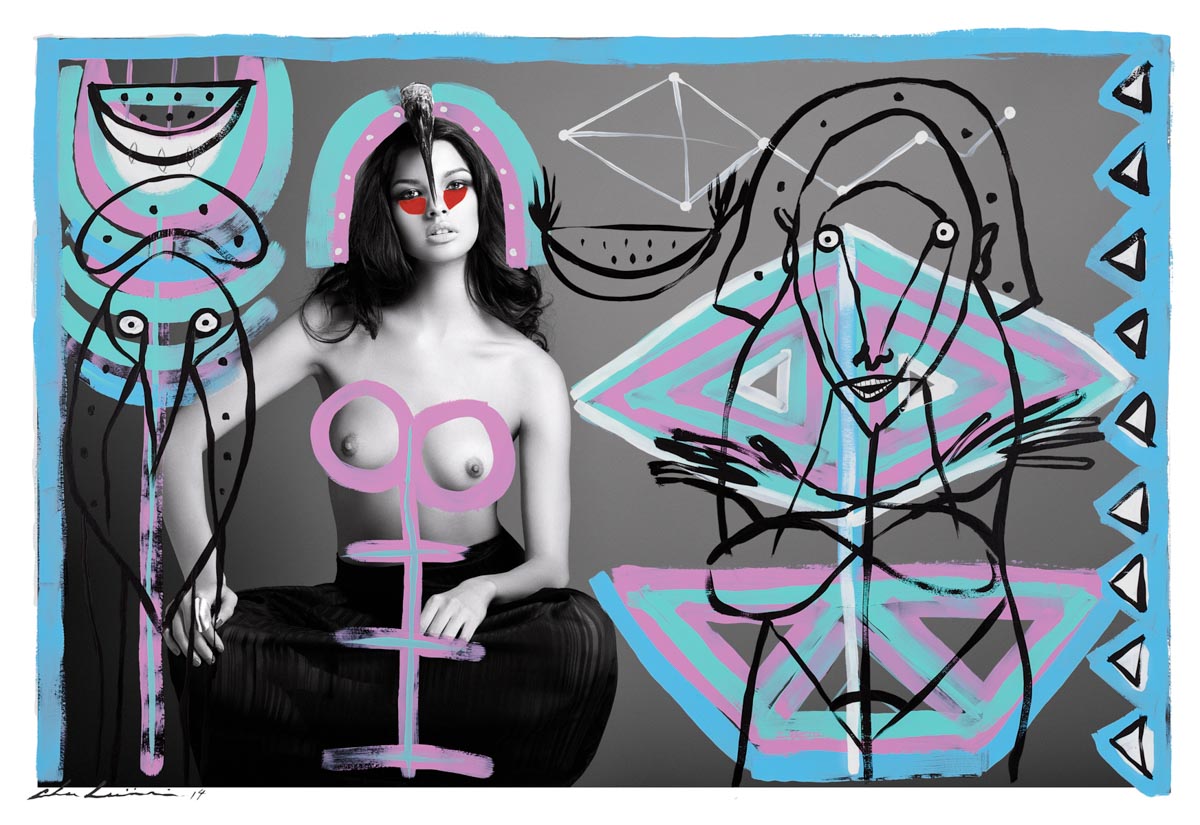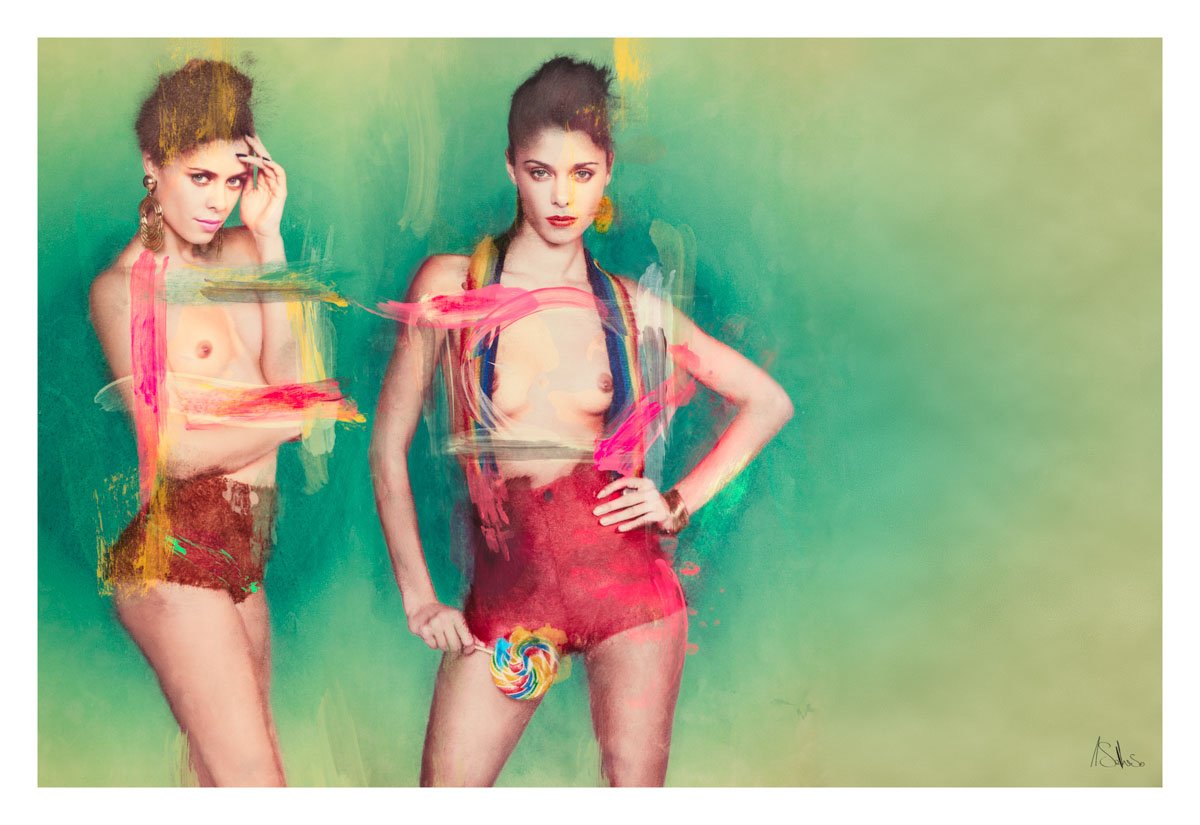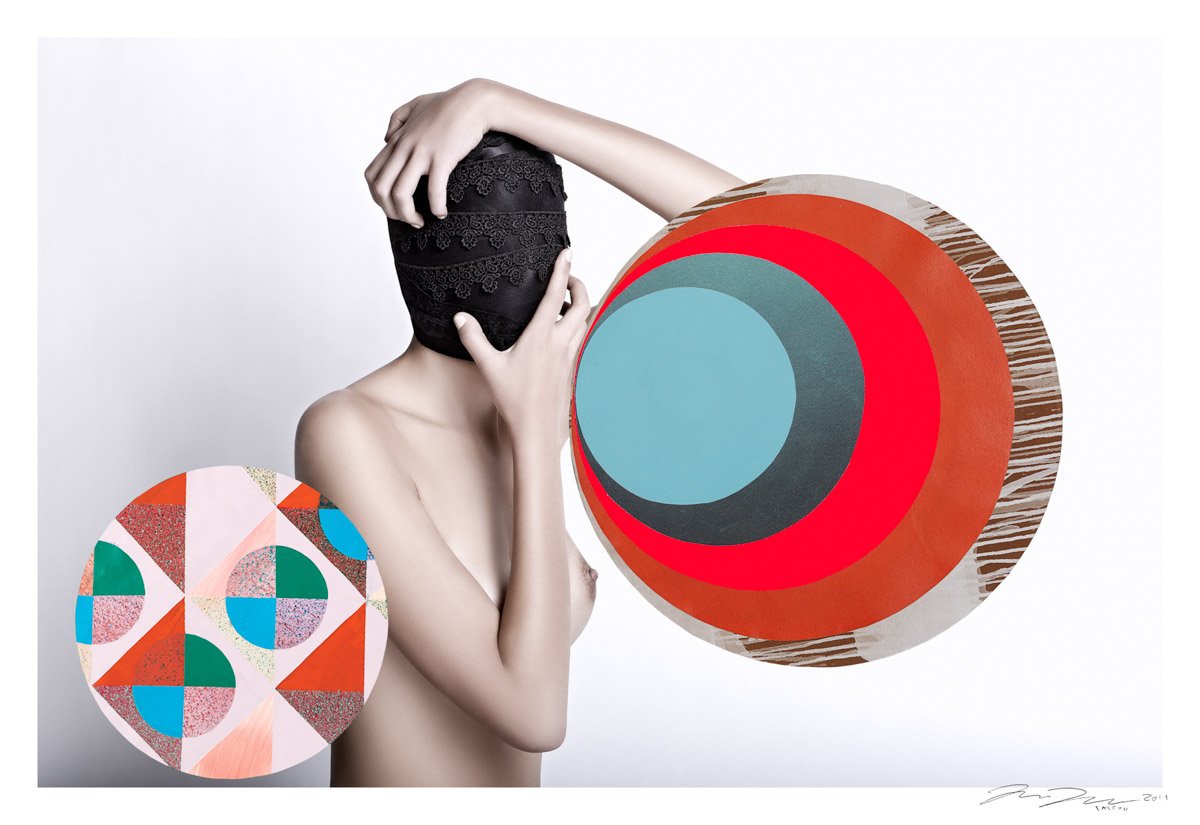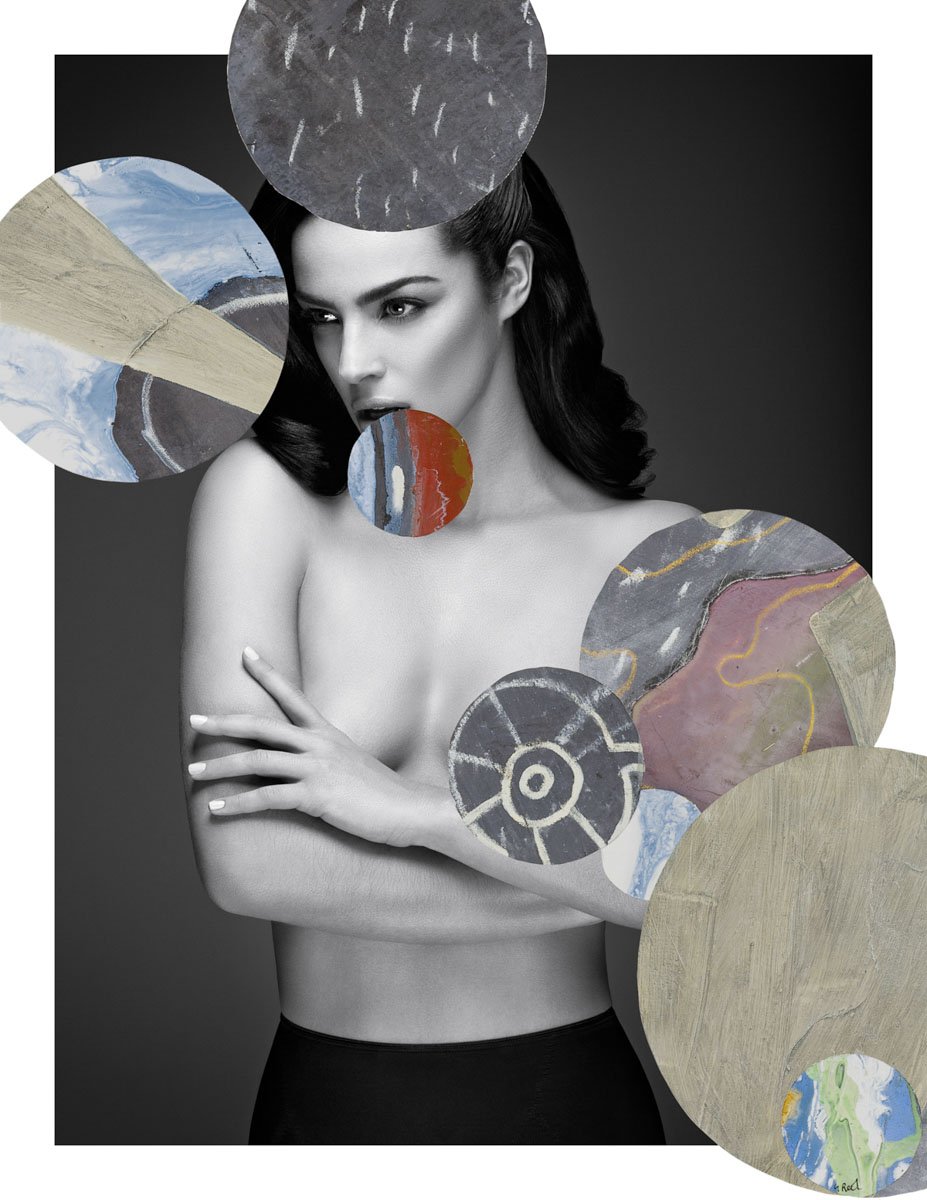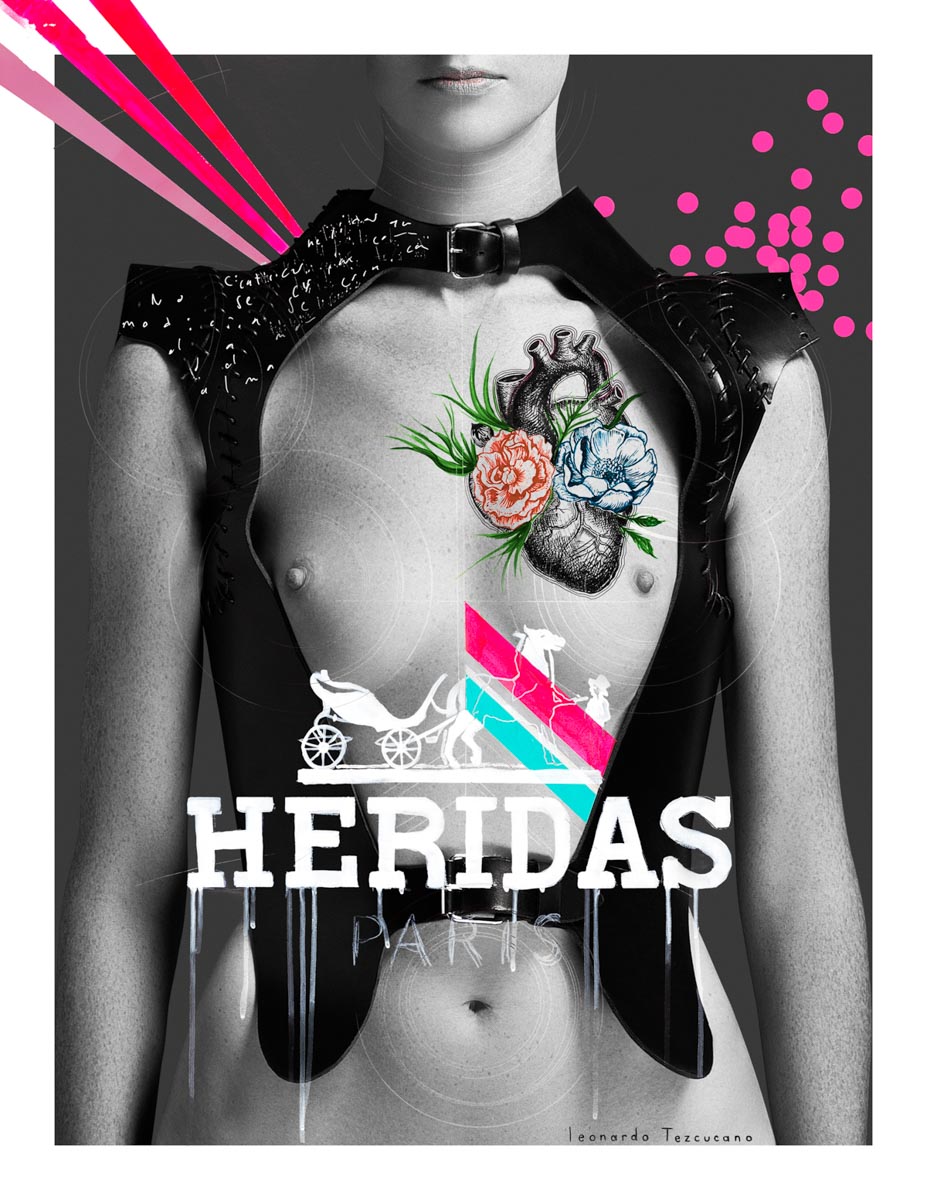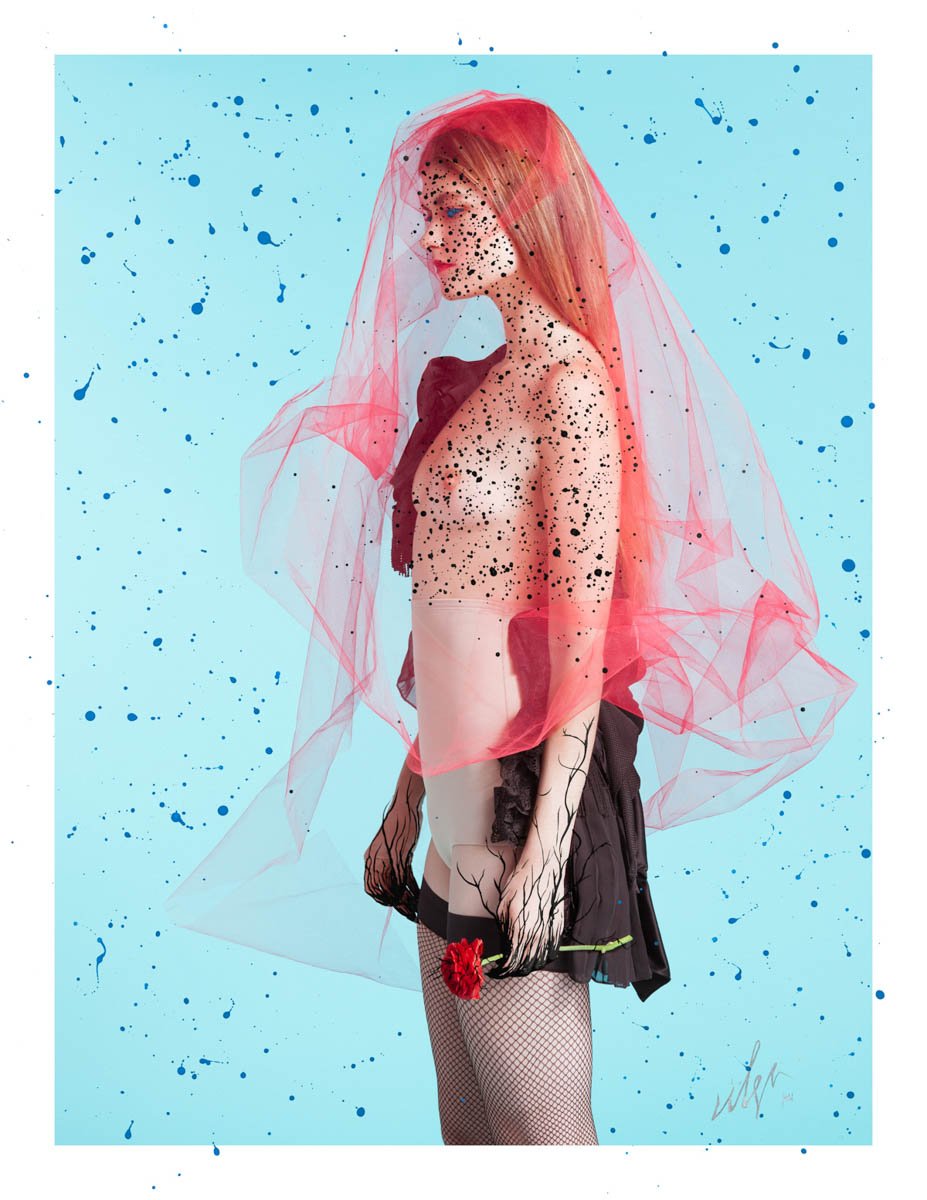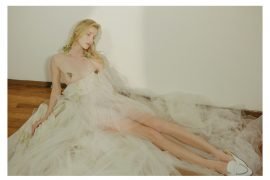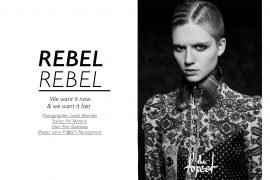Raising awareness through works art, photographer Ramón Gellida collaborates with Mexican visionary artists in order to bring the issue of breast cancer in front of the public eye. In his project Tikkun Olam (Hebrew for repair of the world), the collaborating artists build upon his photographs, in essense being offered unique pieces of canvas, each one with its own story and character. Together, these intervened works of Ramón Gellida (which –for the same reason- are no longer his), are both an homage and world vision that celebrate life and break shapes apart to transform them, but above all, they are a celebration of women, beyond all myth and representation.
httpss://vimeo.com/189870477
Collaborative Art: Gabriel Macotela
Stylist: Marika Vera @marikavera
Model: Andrea Carrazco @andrea.carrazco
1st Assistant: Roberto Mañón @rcmanon
Makeup Artist: Ossiel Ramos @ossielramosabarca
Hair Artist: Gerardo Maldonado @lilttle_lee
Collaborative Art: René Almanza @renealmanzamx
Stylist: Gustavo García-Villa @lamasdolorosa
Model: Cecilia Delgadillo @ceci_delgadillo
1st Assistant: Roberto Mañón @rcmanon
Makeup Artist: Daniel Avilán @danavilan
Hair Artist: Gerardo Maldonado @lilttle_lee
Collaborative Art: Sergio Albiac
Stylist: Marika Vera @marikavera
Model: Claudia Román @claudiaroman1
1st Assistant: Roberto Mañón @rcmanon
Makeup Artist: Ossiel Ramos @ossielramosabarca
Hair Artist: Gerardo Maldonado @lilttle_lee
Collaborative Art: Don Rodo Marinero @donrodomarinero
Stylist: Gustavo García-Villa @lamasdolorosa
Model: Erin Wagner @erinwagner
1st Assistant: Roberto Mañón @rcmanon
Makeup Artist: Daniel Avilán @danavilan
Hair Artist: Gerardo Maldonado @lilttle_lee
Collaborative Art: Chu Huiini @chu.huiini
Stylist: Marika Vera @marikavera
Model: Livia Rangel @liviarangeld
1st Assistant: Roberto Mañón @rcmanon
Makeup Artist: Ossiel Ramos @ossielramosabarca
Hair Artist: Gerardo Maldonado @lilttle_lee
Collaborative Art: Alberto Seveso @indiffident
Stylist: Gustavo García-Villa @lamasdolorosa
Models: Lois & River Hoeboer @lois_and_river
1st Assistant: Roberto Mañón @rcmanon
Makeup Artist: Daniel Avilán @danavilan
Hair Artist: Gerardo Maldonado @lilttle_lee
Collaborative Art: Héctor Falcón @hectordfalcon
Stylist: Marika Vera @marikavera
Model: Lucía Águila @luciaaguila
1st Assistant: Roberto Mañón @rcmanon
Makeup Artist: Ossiel Ramos @ossielramosabarca
Hair Artist: Gerardo Maldonado @lilttle_lee
Collaborative Art: Guillermo Roel
Stylist: Celine de Selva
Model: Ornella Ortile @oortile
1st Assistant: Roberto Mañón @rcmanon
Makeup Artist: Ossiel Ramos @ossielramosabarca
Hair Artist: Gerardo Maldonado @lilttle_lee
Collaborative Art: Leonardo Tezcucano @leotezcucano
Stylist: Marika Vera @marikavera
Model: Sandra Schoffen @sandraschoffen
1st Assistant: Roberto Mañón @rcmanon
Makeup Artist: Ossiel Ramos @ossielramosabarca
Hair Artist: Gerardo Maldonado @lilttle_lee
Collaborative Art: Ciler @ciler
Stylist: Gustavo García-Villa @lamasdolorosa
Model: Tatsiana Trakhimets @ttatsiana
1st Assistant: Roberto Mañón @rcmanon
Makeup Artist: Daniel Avilán @danavilan
Hair Artist: Gerardo Maldonado @lilttle_lee
Collaborative Art: Saner @saner_edgar
Stylist: Marika Vera @marikavera
Model: Thanmy Rossin @thanmyrossin
1st Assistant: Roberto Mañón @rcmanon
Makeup Artist: Ossiel Ramos @ossielramosabarca
Hair Artist: Gerardo Maldonado @lilttle_lee
Ramón Gellida: The Body and what it Represents
By Ricardo Pohlenz
I do not know whether I should draw upon Roland Barthes first, or not. Not so much because he is an obvious reference when speaking of love and photography (each on its own and in its printed work) in terms of meaning, emotion, relationship, procedure and subject, but rather because doing so is irresistible. Photography represents what is modern.
When gazed upon, a photograph becomes a form of imprisonment, an immobilization that with its illusion allows imagining what the hero (any hero) is doing on screen at that magical moment when action stops and he can move at ease among the inert, marble statue-like bodies to explain the situation and its probable evolution. That immobility may want to be imitated on a stage, but
that is no more than a circus routine.
Immobility is an incision into the continuum: a dark split second when the eyelid closes like negative shadowing of the shutter. I close my eyes to capture your image, and the moment I do is when I make it mine. The shutter opens; like an eyelid, to capture the image. The metaphor is not wanton, the image is captive. It is trapped, immobile. To continue with Barthes, though we could say that a photo is an immobile image, and with that, we do not want to say that the image shown does not move, but is unable to emerge –as much as one may want and persist– from the bidimensionality of its recipient. albeit the same thing– and with this, I am manipulating Barthes a little– they cannot leave: “they are anesthetized, held down like butterflies.”1 The simile is not gratuitous, the image, like a butterfly, fixed on paper comparable to a paradox that survives –like an illusion– between living and inert worlds, with the promise –always –of transformation. The photographic image made it possible to transport something that could only be transcribed by imitating light and shadow on paper. In that manner, photography is a form of writing. It is read, in the wonder of its accidents and quality of its detail, it is translated, interpreted and given a meaning–as a unique link to the supernatural– and from the literary viewpoint, as the clearest and most obvious manifestation of an obsession.
It becomes a fetish and is kept in the wallet or shown– impunitous- in the parlor. First one, then another and yet another small photo (so one must peer at them closely, as would a voyeur), or a large one, to make an overwhelming statement. Therefore, at first, since it has to do with principles, at least in the case of Ramón Gellida as a photographer, it was women. If it had been God and not principle, we could have referred to Roger Vadim and Brigitte Bardot, but the intention is not analogous. In the photogram –as in photography– a woman’s body attains subliminal unreality for its lack of substance, the religious experience of what is modern. The paradox of a body, palpable yet absent, which remains etched ghost-like on paper. It is a contamination that multiplies, and thanks to digital media, has taken on increasing intangibility that enchants and seduces the eye –like a modern optical illusion.
Photography makes the female body become an object that holds a process projecting a fictitious idea that reviews modernity, from the illusion of contingence, a relationship built on desire and redemption that invents a thousand and one possible stories based on these images which, like the originals, are duplicates of themselves; there are no originals in the age of mechanical reproduction. One may make a distinction, wear oneself out, limit the printing and destroy the negative. It is an act of love that lives only through its testimony as a document: the object of love as avatar, an apparition, the first and next, new and singular, depending on where it is seen. The only possible original is the one forged when closing our eyes before the target of our love: by wanting to conjure pain, doubt and jealousy, we can but feed them. Thus, when Barthes speaks of the image in A Lover’s Discourse: Fragments, he refers to a scene in which Werther sees Carlota (his beloved) with Alberto, (her fiancé): “The image stands out: it is as pure and clean as words: words that harm me. Precise, complete, finished, definitive, they leave no place for me; I am excluded from them and the original scene.”2 Ramón Gellida is a master that attempts to conjure this privilege and condemnation in his images.
Photography, as an illusion of reality, is converted into a totem, they are one and the same, and yet seem perpetually different, something is always about to appear that is expected with an anxiety held for what is to come, though on each occasion –like every slide in a projector- it depletes as soon as that anxiety arises about what will be. Helmut Newton is not an image. We could say Helmut Newton, as a photographer when looking over the process that characterizes him, the quality of light, the matte pearlescence that frames the pupils in the eyes of each face, the muscular outline of bodies that submit to the space they transgress, deprived of themselves in the name of fashion and other disproportions. The serpent is a topic pursued like a bite from the emblematic image of Nastassja Kinski done by Richard Avedon, until updated with Kate Moss, and done by Mert & Marcus. These are only two examples, the drawing of a line from the updating of a pictorial subject (or worse, of its repetition), in which the referents (and therefore, the meaning) have changed.
It is not that the model embodies Eve being tempted by the serpent, but rather the model is a new Eve, converted into myth by the representation. Ramón Gellida does not deny Helmut Newton or Richard Avedon or Mert & Marcus; he looks and learns and creates his own imaginarium in that leap of validations trapped in a continuum in which the image is a sign (and as a sign, it always supposes a peculiarity. He has built a structure similar to Frankenstein, with scraps of hints and nuances, which ultimately come to life; I am one, and not the rest. The list of Ramón Gellida’s influences, as he has shared it with me, is as follows: Helmut Newton, 2 Roland Barthes, A Lover’s Discourse: Fragments. Richard Avedon, Mert & Marcus, Rankin, Guido Argentini, Inez & Vinoodh, Jan Saudek, Ellen von Unwerth, Paolo Roversi, Greg Kadel, Steven Meisel, Steven Klein, Mario Sorrenti, Mariano Vivanco, Giampaolo Sgura, Patrick Demarchelier and Sebastián Faena. The sublimated body, the face in the foreground, relationship with the object, headdress and garments, the image as a brand, the ideal of beauty in a consumer society, the documentation of a standard where rigor and excess are confused and will convert- at least, into a postapocalyptic future, that is the dream- in the digital remnants with which a world buried in its vanity can be read and interpreted. There are no billboards or shop windows capable of surviving that long. It is the consolation and hope of the file, the catalog –of silicone as a new stone- from the annals of history that tells, as if it were a televised spot: that is how the world was, though it may not have been true, with its gods, its rituals and representations.
One can ask about identification codes of objects and the codes that safeguard them or follow- like Ramón Gellida- with the gas pedal to the floor, in pursuit of that last image like a leap into the void. Not an image of the world, but an image of our own, based on the world and its mishaps in search of just one gesture that encloses it. Once again, it is The Abduction from the Seraglio –the promise of eternal love pledged during a time of adversity experienced from the dematerialization of bodies, converted into electrical impulses, in search of the line that separates a body from its specter. For that same reason, in the separation between one and the other, which ends being a separation of self, and leaves the eye dangling somewhere between mechanical and supernatural, to become an exemplary model- an object- himself, along with his different models. If allowed, he narrates the story of each photograph, pauses on trifles, highlights the sense of timing (almost instinctive), which allowed him to capture this or that moment of the semblance or light on the body or the precise words with which he stops with one or another gesture or posture, capturing it as though it were prey, separating it from its skin, transforming it into code and object. Ramón Gellida does not refer to his models as objects, each has a name: he knows that the object is something resulting from the moment when the shutter snaps.
The captured soul –like a tale from Arabian Nights- dispossessed of self and prepared for as many stories as can be imagined. I suppose that is the reason he tells me the story behind each of his photographs, to repeat them or keep them to myself –whatever I wish- but for me to know them as the narrations they are, like a secret revealed beyond the obvious. A woman is leaning over a television, which is the only light in the room, Ramón Gellida asks her to stop right there, lifts his camera and in a lapse of a few seconds, takes several exposures, one after another, the images are reflected on the woman’s body during that time, and are lost –as is the story of the photo- it becomes light. It is the overlapping of various instants and, yet it appears to be just one, instantaneous like the look that captures it, over and over again. I suppose that was one of the reasons for which he asked a group of painters and illustrators to intervene in a group of his photographs to turn them into palimpsests, which between the image and its garnish, between one layer and the next, as a figure containing, with the impossibility of the original, the unique transgression of collaboration. What does the image itself say? What does the image say, clad in its nakedness? What does it say now that it conceals its true nature (which is otherwise unattainable)? What is its re-born nature when converted in turn into a new object? Collaboration with Gabriel Macotela is the point of scission and reference of this project. Macotela works the photo like a blank canvas: the model is there inherently, with a hierarchal semblance that is transformed into a Hans Bellmer doll, and with those lines of composition, Macotela traces a dreamlike wastelandhalfway between Edvard Munch and Paul Delvaux- that surrounds it, like a stockade and cage. Later, René Almanza, who has been characterized by a brush stroke in his work, halfway between organic and orgiastic, draws a garden of faces and bodies to frame a bride (she carries only a single flower, not a bouquet, a burst of color). Sergio Albiac, whose work is characterized by a digital generative sketch program, turns the model into a bouquet of flowers.
Don Rodo Marinero encroaches violently on the model with splotches of runny paint and collage components (illustrations of scholastic monographies), which convert the photograph into a documented medical event. She is the Eve of the future, with a tutu and embracing arms that are not her own (but end up being extensions of herself ). The Oaxacan artist, Chu Huiini, invades the model with white, aquamarine and lavender strokes and turns her into a gesture. Her breasts are surrounded by a double circumference, which descends until it becomes what could be the contour of her abdomen or a fish skeleton. She wears a wreath on her head, (which could also be a veil).
Chu Huiini duplicates her on the right side, based on her own visage. It is a scrawl, and yet it is not: it is a woman, a ship, a kite. On the left, he draws a masculine presence that gazes, craves and wants to achieve, it is a bird, but also an octopus and a trident whose shape allows tracing first one watermelon, and then the next and the next (another affirmation from appropriation: Were all watermelons available for painting only for Tamayo?) The Milanese illustrator, Alberto Seveso, confers a pictorial unreality to his photograph of two models (twins) with a pigment-manipulation technique. Héctor Falcón, who pursues his own work in a game of strata, –among themes and colors- accommodates two new circular bodies that ensnare the veil-faced model in the middle. They are like balloons that say what she does not, but describe themselves as being a form of chromatic emotion.
Guillermo Roel uses circles as though they were planets: possible worlds, meteors, projections, organs of a stellar body, a visual comment of the ideal that the model incarnates, and how she, with arms crossed, challenges you with her stare. Leonardo Tezcucano surrenders to temptation of the flesh by tattooing a heart on the model in an attempt to convey reality beyond that of her body, lest she leap from the picture with this gesture). The parody of the Hermès logo, in which Heridas (Wounds) is now read, acts as a pin to fasten her there, like the butterfly in the Barthes simile, alive, throbbing, and still there. Ciler, on the other hand, resists his monstrous side, and scarcely draws the veins, the illusory blue of the eyes, a dithering of black specks that adorn the veil-covered skin as if an infection. Saner, on the other hand, knows per se that the face is a mask, and in that manner, endows the model with a jade veneer equipped with fangs, a tongue and flowered headdress that conceals, and therefore, converts her true face (the other one, the one she has every day, the one she wore during the session with Ramón Gellida) into a question, always a mystery to be solved.
Together, these intervened works of Ramón Gellida (which –for the same reason- are no longer his), are both an homage and world vision that celebrate life and break shapes apart to transform them, but above all, they are a celebration of women, beyond all myth and representation.

